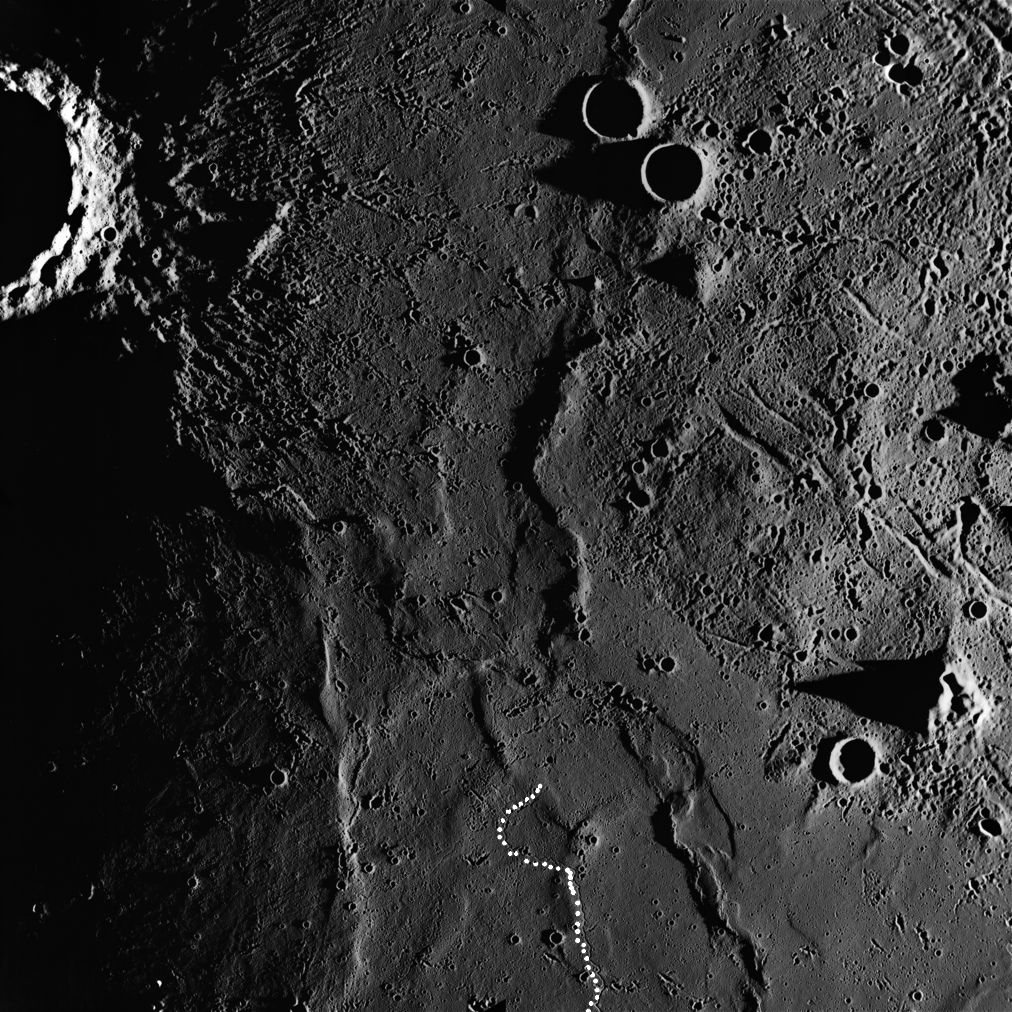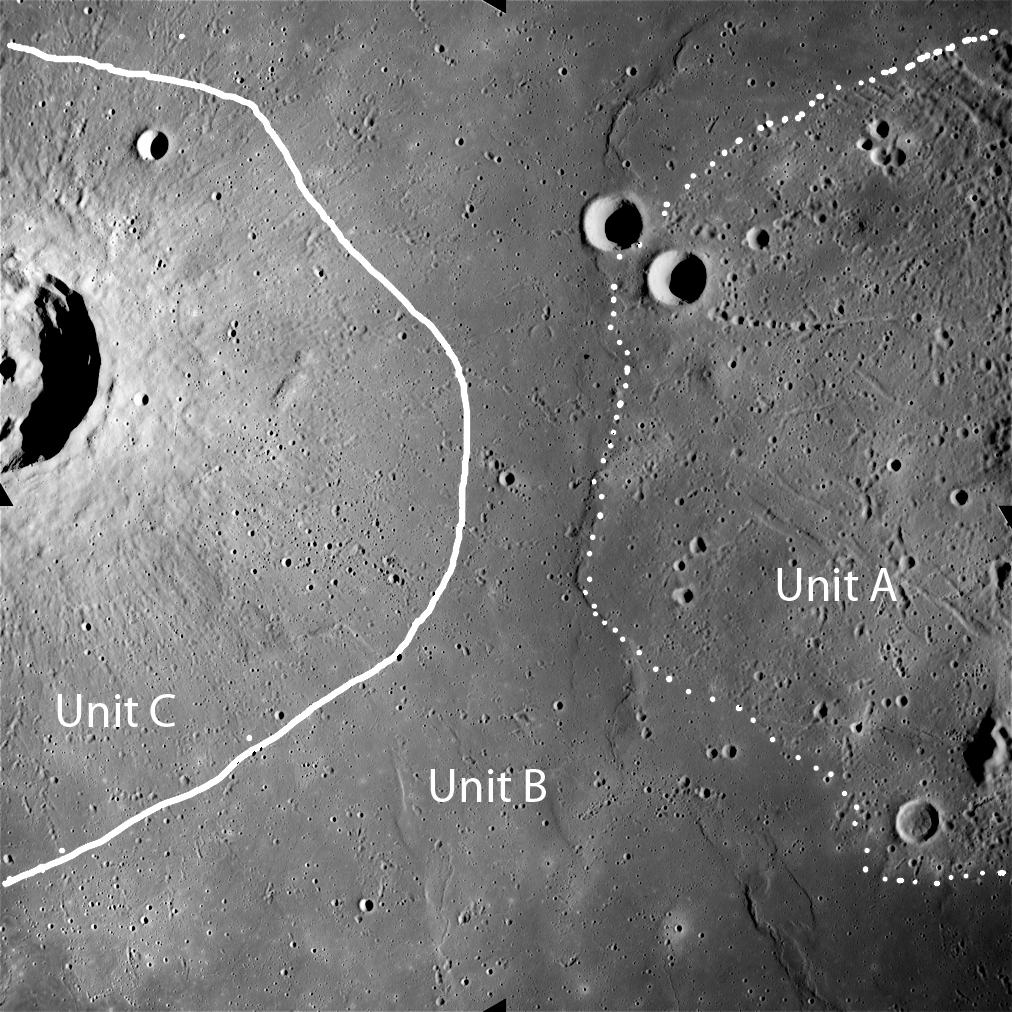
| Project Home | About the Scans | Browse Gallery | Image Map | Support Data | Resources | Ephemeris |
Featured Image - 03/25/2008
The Power of Lighting Conditions
Where would you choose to land: The area in Figure 1 or the area in Figure 2? Obviously, you would choose to land in the area in Figure 2, which is a smooth and inviting place to explore. Figure 1 is craggy, rough, and uninviting by comparison, but these are actually the same region under very different lighting conditions.
Why is the Sun angle different in these two pictures?These pictures were taken on different orbits as the Apollo 15 Command Module Endeavour orbited the Moon. Figure 1 was taken on the 16th revolution, and Figure 2 was taken on the 33rd revolution. The dramatically different look of these two images is simply a result of changes in the "time of day". Figure 1 was taken near dawn, and Figure 2 was taken in the late morning. As the Endeavour orbited the Moon, the relative positions of the Sun, the Moon, and the Endeavour changed, resulting in different lighting conditions. However, comparing these two photos is amazingly useful, and provides fascinating insights about this region of the Moon.
Why do you want to take pictures at different Sun angles?
Because it tells you really interesting things about the lunar surface! The appearance of the region in these two frames is markedly different. Under the low sun angle in Figure 1, the shadows cast by the sunlight makes the topography of the region immediately apparent, but the topographic features of the region are much harder to distinguish in Figure 2. In fact, the low Sun angle in Figure 1 makes it possible to distinguish a sinuous rille (highlighted in Figure 3) that is not apparent under the high Sun angle in Figure 2.
If you can see the shape of surface features more easily under low Sun conditions, then why take the high-Sun pictures at all?
Because the high Sun angle image in Figure 2 is a powerful additional tool that reveals subtle brightness variations which are not easy to see in the low Sun image. The relative brightness of this region's three major geologic units (shown in Figure 4) is actually easier to distinguish in Figure 2. Plus, all of the shadowed areas in Figure 1 are visible in Figure 2. The new Lunar Reconnaissance Orbiter Camera will be taking pictures of important places on the lunar surface, such as potential landing sites for NASA's new Altair human lunar landing vehicle, under many different lighting conditions in order to collect as much information about the topography and geology of the imaged regions as possible.
 Figure 3. Annotated view of Figure 1, above, showing the sinous rille (highlighted with a dotted line near the bottom of the image) that becomes visible with a low Sun angle. |
 Figure 4. Annotated view of Figure 2, showing the three major geologic units in this image. Unit A, densely cratered plains material, is the oldest; Unit B, mare material, is the next oldest; and Unit C, the youngest unit, is fresh ejecta that surrounds Timocharis crater on the left. The brightness variations between the three units are very subtle, and the boundary between the fresh Timocharis crater ejecta of Unit C and the mare material of Unit B is very gradational and difficult to determine precisely based solely on this image, even with the high Sun angle. |
For more information, please see: Apollo over the Moon: The View from Orbit, H. Masursky, G. Colton, and F. El-Baz, editors, NASA SP-363, United States Government Printing Office, pg. 74.
Tweet
![]()

|
|
Space Exploration Resources |
|
 LPI LPI
|

